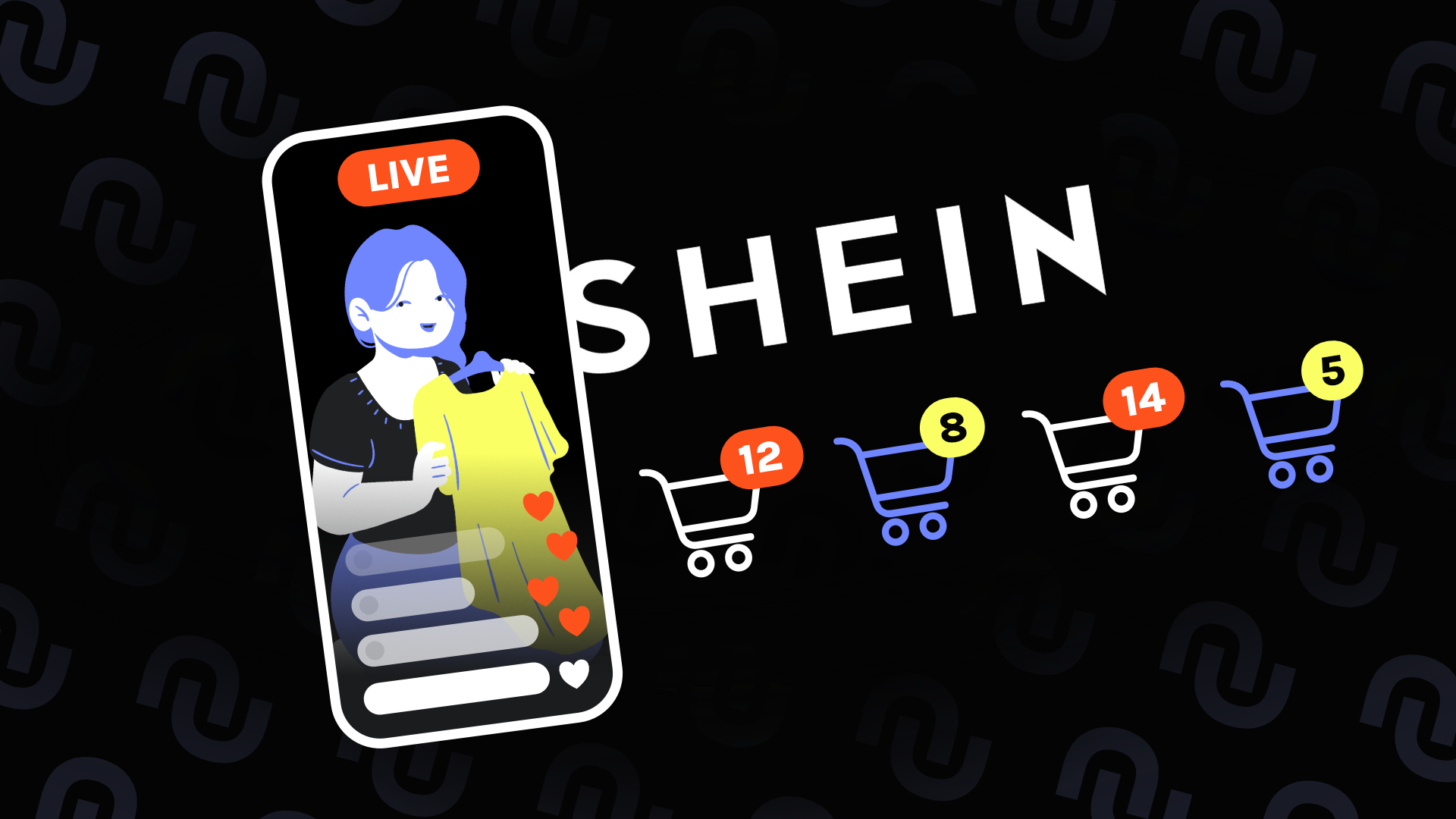A bill aimed at banning advertising from ultra-fast fashion platforms like Shein was debated in the National Assembly. In the viewfinder of deputies, micro-influence: advertising content often carried by small influencers, followed by a few thousand subscribers. This practice is not the only tool brands have to get consumers hooked.
Eyes glued to her smartphone, Sarah heads towards the escalator. On his arm, six or seven shopping bags collide. The young woman toured her favorite brands at the Halles de Paris. But once home, other purchases await him. She thinks about the items piling up in her online shopping cart on Shein, the Chinese ultra-fast fashion giant.. Every week, the thirty-year-old spends long hours putting together this list of dream products. She spends €400 to €500 per month on the platform. A significant budget that she would not reduce for anything in the world: “If I run out of money, I'll steal my husband's card if I have to, but I won't stop, no! “, she confesses without difficulty. Before adding with a laugh: “I can't live without it, I'm a shopping addict, a real one! »
Advertisement
“Shopping addict”, the term is so glamorous that we forget what it hides. This feeling of addiction that Sarah describes is, however, fueled by formidable marketing strategies, which the deputies tackled in the hemicycle on March 14, 2024. Voted unanimously on first readingthis bill from the Horizon group aims in particular to prohibit any form of advertising for fast fashion brands.
But what type of advertising are we talking about? To conquer the market, attract and retain their customers, these brands massively use micro-influence: a practice which consists of recruiting influencers with barely a few thousand subscribers, to distribute advertising content on their social networks. If this practice could be prohibited by law if adopted after its passage in the Senate, other tools would a priori remain out of reach. Among them: algorithmic targeting, which showers customers with ever more personalized suggestions.
Identification, mimicry and “Shein haul”
Four years ago, Sonia Mahjoubi only had 27,000 subscribers when Shein contacted her for a ” collaboration “. The brand then begins to send him around ten items of his choice free of charge every month. In return, Sonia undertakes to make one publication or one Instagram story per article. On her account, the 23-year-old student appears on the beaches of the Côte d'Azur wearing swimsuits from the new collection or poses on a bench in a white mini-skirt and crop top set. In the description, you can read the tag “@sheinfrance”sometimes accompanied by a promotional code offering up to 70% off the brand's products.

The case of the young woman is emblematic of the strategy developed by the Chinese company. Its preferred relays are small influencers, followed by a few thousand or tens of thousands of people at most. Micro-influencers, not yet professionalized, who resemble their subscribers more than inaccessible muses, followed by millions of fans. The illusion of proximity thus created gives rise to a relationship of trust with the community, which loses sight of the advertising nature of the content viewed.
Advertisement
This strategy is based on an increased identification of users with micro-influencers and on the mimicry that this identification arouses. Every day, thousands of videos of “Shein haul” are posted on YouTube, Instagram or TikTok by anonymous users using the same codes as those of influencers. We see customers — often young women — unpacking their orders, presenting and trying on their purchases. In other publications, they proudly display their Shein clothing and accessories in a heavenly setting of saturated colors. They only have a few dozen or hundreds of subscribers and receive no compensation, but behave like real ambassadors of the brand.
On the shopping platform, each product is also subject to a rating and comments, to which customers can add personalized messages and photos. They can also provide information on the size match once their order is received. Reactions that allow them to obtain points to transform into discounts. This way of involving the buyer in the promotion of articles gives them a new status of ” collaborater “ of the brand. The most faithful become “model clients”allowing others to identify and better project themselves with the article concerned.
A very real risk of addiction
For Claudia Boddin, the risk of addiction is very real, among young people and older people alike: “These platforms push people to buy one t-shirt, then another and another… The person can have ten white t-shirts and continue to buy them, without ever wearing them. Sometimes, she doesn't even open her closet to put away the clothes she has just ordered. » The consumer becomes prey to a logic of accumulation, which can lead to a loss of control: “As in any addiction, the affected person no longer has any reality principle”, summarizes the psychologist.
In the trap of algorithms
But micro-influence is not the only resource that platforms have to arouse the desire of their customers. Further in the Halles gallery, Lina and Kenza have just come out of a Zara store, their arms full of their purchases. Like Sarah — the “shopping addict” met a little earlier near the escalator — both are loyal Shein customers, even if Lina admits to having “calmed down”, after ordering once or twice a month for several years. From now on, she only goes to the site when she spots a dress she likes on social networks, but still lets herself be drawn in despite herself: “When I go there for a specific thing, I always end up buying other things, I see that there is this and that…”, explains the young girl. The trap ? Algorithmic targeting: personalized suggestions in real time and put forward by the platform.


This analysis of the customer journey on the site makes it possible to anticipate the desires of future buyers in an ever more precise manner. “Algorithms know consumers better than they know themselves”, assures Maria Mercanti-Guérin. The very incentive nature of the recommendations thus produced has the effect of locking the user into a path traced by the algorithm: “ The customers are like drug addicts, it can be very complicated for them to change their consumption pattern », insists the academic.
Client ” drugs “, this is also what psychologist Claudia Boddin describes, for whom the functioning of these shopping platforms is addictive in itself. With several thousand new products online every day, ultra fast fashion brands seek to create a need among consumers… and succeed. They then find themselves caught between increasingly devious influence strategies and extremely personalized advertising content. “This is the biggest danger, concludes the psychologist, advertising has always relied on identification, but now the user is the subject of targeted and tailor-made advertising. »
